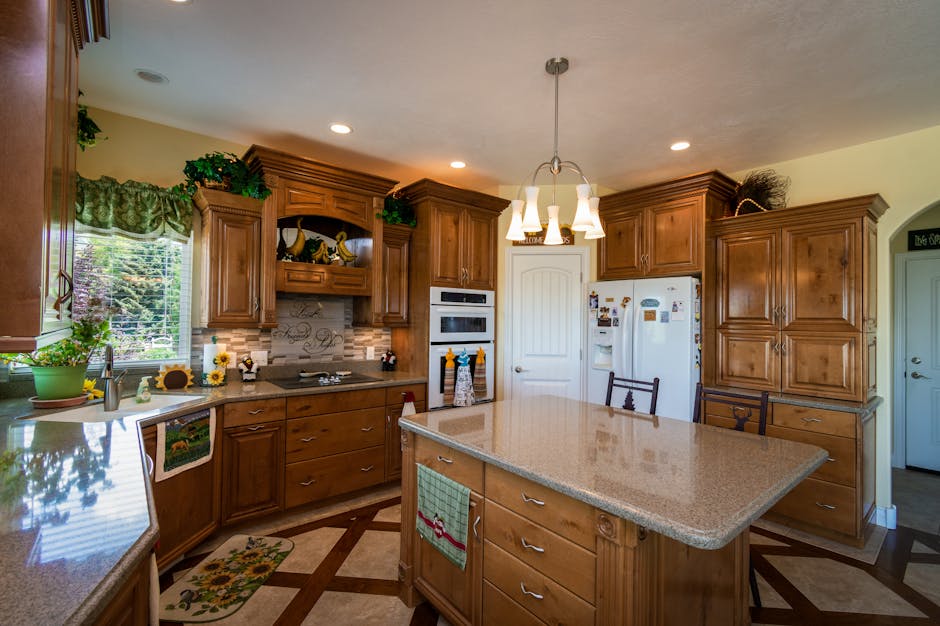For those living in regions frequently threatened by wildfires, constructing or remodeling a house with fire-resistant materials transcends being merely a suggestion; it becomes an absolute necessity. The escalating intensity and frequency of these devastating infernos demand a proactive approach, prioritizing construction methods and materials capable of withstanding extreme heat and flames. This exhaustive exploration will scrutinize an array of fire-resistant home remodeling substances, providing crucial insight for homeowners aiming to safeguard their dwelling and families against the ever-present threat of wildfires, because who wants their home going up in smoke?
Understanding the Fire Threat and Wildfire Risk Assessment
Living in an area where wildfires often occur means you have to really think about fire safety. Understanding how at risk your home is can lead to better choices when you’re improving it. The US Forest Service can provide detailed wildfire risk assessments. These are based on a bunch of factors like how dry the vegetation is, how steep the slopes are, and the history of fires in the area. A "wildfire hazard map" is a great tool for understanding the risks in your community. Its an important starting point.
Factors which contributes to increased wildfire risk:
- Arid climate with prolonged dry seasons.
- Abundance of flammable vegetation like dry brush and pine trees.
- Steep slopes, aiding in the rapid spread of flames uphill.
- Strong winds exacerbating fire intensity and direction.
- History of frequent wildfires in the area.
- Homes situated in the wildland-urban interface (WUI) where development encroaches on wildland areas.
Knowing your risk helps you pick the right materials for your remodel and makes sure your house is as safe as possible.
Choosing Fire-Resistant Roofing Materials
The roof is one of the most vulnerable parts of your home during a wildfire. Choosing the right roofing material can make a huge difference. Several fire-resistant options are available:
- Clay and Concrete Tiles: These are very resistant to fire and can protect your home from embers and flames. They’re heavy, so your roof structure might need reinforcing.
- Metal Roofing: Metal roofs, especially those made of steel or aluminum, are non-combustible. They can reflect heat and prevent the roof from catching fire. They can be installed in many ways like standing-seam metal roofing for a durable and attractive look.
- Asphalt Shingles (Class A Rated): Not all asphalt shingles are created equal. Class A rated asphalt shingles are the most fire-resistant. Look for this rating when selecting shingles, and make sure they are installed correctly with proper underlayment.
- Slate Roofing: A natural stone, slate is incredibly durable and fire-resistant. It's a more expensive option, but it offers excellent protection and a timeless look.
- Fiber Cement Shingles: These shingles made from cement, sand, and cellulose fibers are another durable, fire-resistant choice.
Fire-Resistant Siding Options for Maximum Protection
Siding protects the exterior walls of your home. Choosing fire-resistant siding can prevent flames from spreading to the interior of your house.
- Fiber Cement Siding: Similar to fiber cement shingles, this siding option offers great fire resistance. It mimics the look of wood but doesn't burn.
- Stucco: Stucco is a classic fire-resistant material made from cement, lime, and water. It provides a thick, non-combustible layer that protects your home.
- Brick: Brick is another excellent fire-resistant siding choice. It’s durable and non-combustible, providing a solid barrier against flames.
- Metal Siding: Like metal roofing, metal siding can protect against fire. It is long lasting and available in different styles to improve your homes curb appeal.
Protecting Windows and Doors
Windows and doors are common entry points for wildfires. Using fire-resistant materials can prevent flames and embers from entering your home.
- Dual-Pane Windows: These windows help protect against outside temperatures.
- Tempered Glass: This glass is more resistant to heat and impact than standard glass. When it breaks, it shatters into small pieces instead of shards, reducing the risk of injury.
- Fire-Rated Doors: These doors are specifically designed to withstand fire for a certain period of time, usually measured in minutes (e.g., 20-minute fire-rated door). They provide a critical barrier against the spread of flames.
- Metal Doors: Metal doors, especially steel, are highly fire-resistant and can be a great option for exterior doors.
Decks and Landscaping Considerations
Decks and landscaping can contribute to fire risk if they’re made of flammable materials. Choosing fire-resistant options can reduce the risk of fire spreading to your home.
- Composite Decking: Composite decking, made from a blend of wood fibers and recycled plastic, is more fire-resistant than traditional wood decking. It doesn't splinter, rot, or require painting, making it a low-maintenance option.
- Concrete Pavers: Concrete pavers are a non-combustible option for patios and walkways. They can help create a fire-resistant zone around your home.
- Rock and Gravel: Using rock and gravel around your home can create a firebreak, preventing flames from spreading to flammable vegetation.
- Fire-Resistant Plants: Choosing plants that are low in resin, sap, and oil can reduce fire risk. Some good options include succulents, lavender, and rockrose.
- Maintain Defensible Space: Clear vegetation and debris within 30-100 feet of your home to create a defensible space. This can help prevent wildfires from reaching your house.
Interior Fire Safety Measures
While focusing on exterior materials is crucial, interior fire safety measures are also essential for protecting your home and family.
- Fire Sprinkler System: Installing a fire sprinkler system can quickly extinguish fires before they spread, minimizing damage and increasing the chances of survival.
- Smoke Detectors: Ensure you have working smoke detectors on every level of your home, especially in bedrooms and hallways. Test them monthly and replace batteries annually.
- Fire Extinguishers: Keep fire extinguishers in easily accessible locations, such as the kitchen, garage, and near bedrooms. Make sure everyone in the household knows how to use them.
- Fire-Resistant Insulation: Using fire-resistant insulation materials, such as mineral wool or fiberglass, can help slow the spread of fire within your home.
Building Codes and Regulations
Many jurisdictions in wildfire-prone areas have specific building codes and regulations related to fire safety. It’s important to understand and comply with these requirements when remodeling your home.
- International Wildland-Urban Interface Code (IWUIC): This code provides guidelines for building homes in the WUI, including requirements for fire-resistant materials, defensible space, and access for emergency vehicles.
- Local Building Codes: Check with your local building department to understand specific fire safety requirements in your area.
- Permitting Process: Obtain the necessary permits before starting any remodeling work to ensure compliance with building codes.
Financial Assistance and Incentives
Remodeling your home with fire-resistant materials can be expensive, but financial assistance and incentives may be available.
- Grants and Rebates: Some government agencies and non-profit organizations offer grants and rebates for homeowners who invest in fire-resistant construction.
- Insurance Discounts: Many insurance companies offer discounts to homeowners who take steps to reduce their wildfire risk. Check with your insurance provider to see if you qualify.
- Tax Credits: Certain fire safety improvements may be eligible for tax credits. Consult with a tax professional for more information.
Maintenance and Inspection
Even with fire-resistant materials, regular maintenance and inspection are essential for keeping your home safe.
- Roof Inspection: Inspect your roof regularly for damage or deterioration, and repair any issues promptly.
- Siding Inspection: Check your siding for cracks, gaps, or other damage, and make repairs as needed.
- Gutter Cleaning: Keep your gutters clean and free of debris to prevent the accumulation of flammable materials.
- Defensible Space Maintenance: Regularly maintain your defensible space by removing vegetation and debris.
Selecting a Qualified Contractor
Choosing the right contractor is crucial for ensuring that your remodeling project is done correctly and safely.
- Experience and Expertise: Look for a contractor with experience in fire-resistant construction and a thorough understanding of building codes.
- Licensing and Insurance: Verify that the contractor is licensed and insured.
- References and Reviews: Check references and read online reviews to get a sense of the contractor's reputation.
- Detailed Contract: Get a detailed contract that outlines the scope of work, materials, and payment schedule.
Remodeling a home in a wildfire-prone area with fire-resistant materials is a crucial investment in safety and security. By understanding the risks, choosing the right materials, and following building codes, homeowners can significantly reduce the risk of fire damage and protect their property and families, not to mention the peace of mind it brings. It’s definitely worth considering if you live in a high-risk area.





